
Go to the seaside and escape between the tides. Get sandy toes, listen to the waves - and always, always look for seashells.
A day at the beach isn’t complete without a sandcastle decorated with these marine treasures, or a few in the pocket to bring home. Adorning bathroom shelves and windowsills, seashells are not only fond reminders of a visit to the sea, but they have many secrets to share and stories to tell about the animals that made them and the wonders of their watery world. Any shell, after all, was once part of a living, breathing sea creature. Learn to decipher these hidden messages and you’ll start to see seashells in a whole new light.
Every time you pick up an empty seashell, you’re holding a mollusc’s abandoned exoskeleton, which these soft-bodied animals use as a multi-purpose tool. This is their home, their place to hide, and the attachment point for muscles to help them move. There’s a plethora of shells to find, made by different kinds of molluscs, in habitats all around the UK coasts.
Rocky shores and tide pools are home to lots of sea snails (gastropods) with elegant spiraling shells, including dog whelks and periwinkles. When it’s alive, a sea snail pokes its tentacled head out of its shell’s open hole and crawls along on a muscly foot.
At low tide, limpet-like chitons with ‘coat-of-mail’ shells, creep about under rocks, their shells in eight plates across their backs. Sandy beaches are the domain of cockles, razor clams, and other types of bivalves, each bearing a pair of crinkled and fan-shaped shells that clamp tightly together to keep their soft bodies tucked up inside.
Diese Geschichte stammt aus der July 2022-Ausgabe von BBC Wildlife.
Starten Sie Ihre 7-tägige kostenlose Testversion von Magzter GOLD, um auf Tausende kuratierte Premium-Storys sowie über 8.000 Zeitschriften und Zeitungen zuzugreifen.
Bereits Abonnent ? Anmelden
Diese Geschichte stammt aus der July 2022-Ausgabe von BBC Wildlife.
Starten Sie Ihre 7-tägige kostenlose Testversion von Magzter GOLD, um auf Tausende kuratierte Premium-Storys sowie über 8.000 Zeitschriften und Zeitungen zuzugreifen.
Bereits Abonnent? Anmelden

SNAP-CHAT
Justin Gilligan on giant spider crabs and holding hands with an octopus
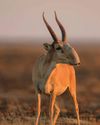
STEPPE CHANGE
Herds of saiga have returned to Kazakhstan, but there's a fine balance to tread
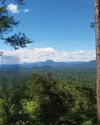
TREES FOR LIFE
Community is at the heart of conservation in the tropical forests of southern Belize
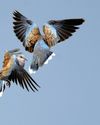
WHEN DOVES CRY
Turtle doves are now the UK's fastest declining bird species, but the RSPB is on a mission to save them

SURVIVAL OF THE CUTEST
We can't help being drawn to cute creatures, but our aesthetic preferences both help and hinder conservation

LIGHT ON THE NORTH
Spectacular images of Arctic foxes, reindeer and musk oxen reveal the wild beauty and diversity of Scandinavia
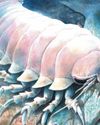
ROLLING IN THE DEEP
The super-sized crustacean that lives in the deepest, darkest ocean
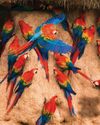
LET'S GET TOGETHER
Clay licks deep in the Amazon explode in a riot of colour, with macaws the stars of the show
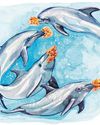
FEMALE OF THE SPECIES
To sponge or not to sponge? That is the question for the bottlenose dolphins (Tursiops aduncus) living in Shark Bay, Western Australia.
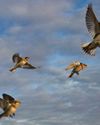
7 nature encounters for the month ahead
WITH NATURALIST AND AUTHOR BEN HOARE